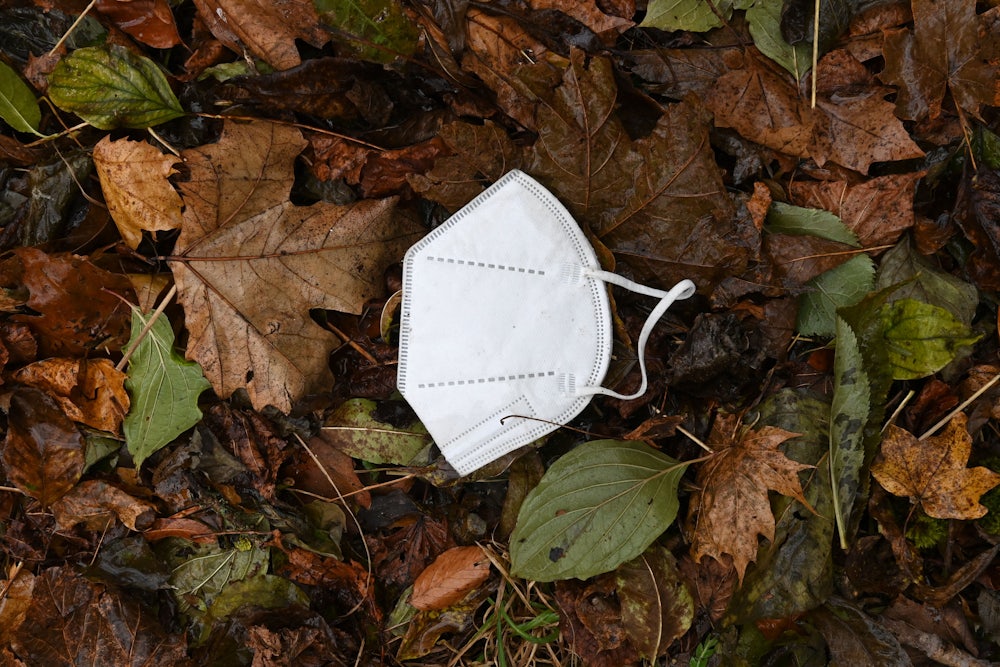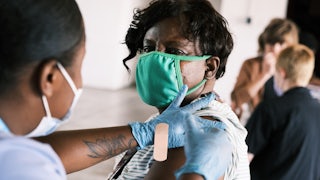Last year, the advice was simple, even if it was difficult to take: It was too dangerous to have a normal Thanksgiving. Instead, many of us bunkered down—we celebrated with our pods or we stayed home with our immediate families. The decision, though grim, was pretty black and white: Gathering outside of our households could present serious, even deadly risks to ourselves and others.
Now, a year later, there are infinite shades of gray, all depending on each person’s individual risk assessments and mitigation strategies. Vaccines, for instance: Is it OK to have unvaccinated kids at the holiday dinner? What about kids who have only had access to their first shots? Do all or some of the adults need boosters? Then there are questions about how many people are invited, where they’re traveling to and from, when and how to test, what kind of ventilation is most effective, whether that throat tickle is an early symptom.… It’s exhausting.
Somehow, as more options open up to us, these decisions feel more stressful than ever before. When you might have simply refused outright to do something that was obviously dangerous before, now you are weighing just exactly how risky it may be and whether the benefits are worth it. And because each individual has a different way of weighing benefits and risks, many of us are arriving at different conclusions—putting us on a collision course with loved ones and friends.
“Everybody is exhausted,” Dr. Megan Ranney, an emergency physician at Brown University and a co-creator of the MyCovidRisk app, told me. “Regardless of where you are on the spectrum around Covid, everybody is tired of this pandemic.” All of our risk analyses are, she said, “really complicated and difficult. And it comes down to some value judgments, which are really difficult to negotiate because different people and different families are going to have slightly different value judgments around the level of risk that they’re willing to take.”
Many who dutifully distanced all last winter and are now trying to navigate post-vax life may feel that disagreement has sprung up among our social groups out of nowhere. But it’s not that people who were previously in sync on taking the virus seriously have suddenly changed their minds, Dr. Jessi Gold, assistant professor of psychiatry at Washington University School of Medicine, told me. “It’s just getting brought to the surface a little more because people are trying to live their lives a bit more than they were.” Now that we’re all thinking about what is important to us and what might be worth any potential risks, there’s a real possibility that our priorities might not align. For example, you might prioritize indoor dining or live music shows, while another person prefers to have everyone in a large extended family around the table at once.
“It’s really challenging to navigate, and there’s no perfect answer to how to do it,” Gold said. But she did have one big suggestion: communication. “It’s always better to put your cards on the table,” she said. “Say what you’re willing to do or not do. Just be as honest as possible.”
Earlier in the pandemic, we might have been quicker to cut out friends who had clearly different ideas about what we needed to do or what our responsibilities to each other looked like. (How many of us suddenly found ourselves on opposite sides of the mask or vaccine debate with childhood friends or family members?) But conversations about what we might accept are much more nuanced now. These are not necessarily “cut-your-friends-off decisions,” as Gold put it.
The game has changed, even if we struggle to learn the new rules. “We are in a different spot now for people who are vaccinated. The world does not look the same for you and me today as it did a year ago,” Ranney said. “The vaccines make it unlikely for you to catch it and then very unlikely for you to get really sick.” That doesn’t mean throwing away all precautions. Especially for those who are older or immunosuppressed, and thus not as well protected by vaccines and more susceptible to severe illness, “I might be a little more cautious still, especially if you’re in an area with high prevalence,” she said. The same goes for parents of kids who only recently became eligible for vaccines, as well as those with young kids who glimpse no relief in sight. People who are fully vaxxed can still wind up in very different places on risk decisions.
Communication—between medical professionals and the community, between friends and family—is more important than ever. “It’s the combination of having empathy and understanding what their thought process is, and their values and their norms, and providing data in a way that makes sense to them, so they really can make informed decisions instead of just emotional decisions,” Ranney said.
It’s acknowledging, too, that some emotional decisions are valid as well, as long as they aren’t hurting anyone. If someone reaches a different conclusion about what’s acceptable for them, Gold said, “you should be empathetic and understanding of everything that your friends and family are choosing, and try your best to help and support that.” Ideally, she said, the person with the greatest restrictions should take priority, especially those who are immune-compromised or living with someone who is. And if you still want to throw that mask-free rager, communicate the parameters and potential risks in advance, and exercise understanding if not everyone is on board.
We also need to understand the deep schisms formed by privilege. Not everyone has access to rapid tests and high-quality masks, for instance, particularly around the holidays and times of high demand; not everyone can take two weeks off work if their kids are exposed to Covid-19 or get sick (from any virus) right now. And many people weren’t able to take the same precautions, such as working from home, over the course of the pandemic. It’s important for everyone to take into account how very different our experiences of the pandemic were—and to have grace for the ways we’ve all dealt with it and continue to deal with it.
“This has been a very hard time for uncertainty and anxiety and grief,” Gold said. “That is all really unpredictable and sometimes hard to explain, and we have to allow people to act sometimes in a way that might not make sense to us … but we should support them through it if they need it.”
We have learned more about ourselves in the past two years than perhaps we wanted to know. I used to love loud, tumultuous parties, but now I love long conversations with friends one-on-one even more. Some of us are realizing that we don’t really like drinking, for example, and we don’t want to find ourselves back in situations where that’s expected. “It’s OK to say out loud to people, ‘Turns out I don’t like going to big parties and this isn’t fun for me.’ I think people would understand because I think there’s probably things in their life they’ve reevaluated, too,” Gold said.
The pandemic has changed us, for worse and for better; we are not the same people we were two years ago. We have had the chance to think about what is truly important to us, and as we begin adding those important elements back into our lives, we’re bound to see differences in how each of us rates our priorities. Rather than wondering who has lost the plot—you, or everyone around you?—this is a chance to understand each other a little bit better. To look beyond the risk analyses and see what priorities we have in common. We might be surprised—in a good way.










